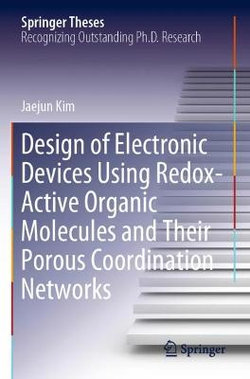Redox-active organic molecules hold considerable promise as flexible electronic elements, because their electronic state can easily be controlled using external energy. Although various kinds of redox-active organic molecules have been synthesized, attempts to apply them to electronic devices have been limited, owing to the lack of proper structural design. Moreover, ligand-based redox-active PCNs remain largely unexplored because of the limited availability of redox-active ligands. In addition to developing new redox-active organic molecules, in order to design electronic devices based on these molecules/PCNs, it is essential to understand the connections between their molecular arrangement, electrical properties, and redox activity.
In this thesis, the redox-active organic molecule 2,5,8-tri(4-pyridyl)1,3-diazaphenalene (TPDAP), which features a large pi plane and multi-intermolecular interactivity, is used to develop a resistive switching memory device. In addition, its PCNs are synthesized to fabricate chemiresistive sensors, and the electrical properties are modulated using post-synthetic modification. Each mechanism is systematically investigated by means of structural determination and well-defined control experiments. Subsequently, the book proposes general guidelines for designing electronic devices using redox-active organic molecules.
The book will appeal to a broad range of readers, from basic scientists to materials engineers, as well as general, non-expert readers.




Share This Book: